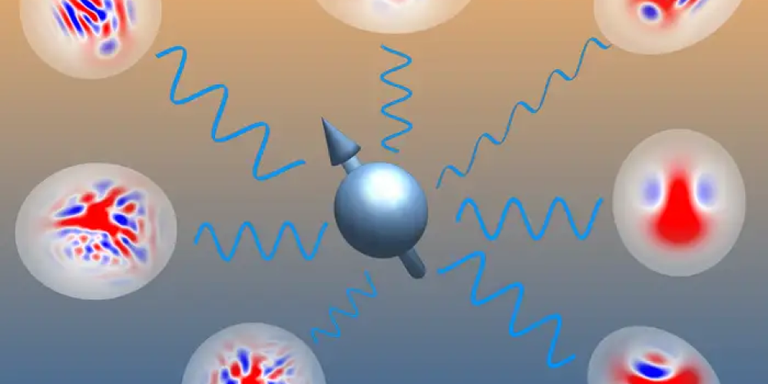Exploring uncharted territory in quantum devices
Many of today’s quantum devices rely on collections of qubits, also called spins. These quantum bits have only two energy levels, the ‘0’ and the ‘1’. However, spins in real devices also interact with light and vibrations known as bosons, greatly complicating calculations. In a new publication in Physical Review Letters, researchers in Amsterdam demonstrate a way to describe spin-boson systems and use this to efficiently configure quantum devices in a desired state.
Quantum devices use the quirky behaviour of quantum particles to perform tasks that go beyond what ‘classical’ machines can do, including quantum computing, simulation, sensing, communication and metrology. These devices can take many forms, such as a collection of superconducting circuits, or a lattice of atoms or ions held in place by lasers or electric fields.
Bosons
Regardless of their physical realization, quantum devices are typically described in simplified terms as a collection of interacting two-level quantum bits or spins. However, these spins also interact with other things in their surroundings, such as light in superconducting circuits or oscillations in the lattice of atoms or ions. Particles of light (photons) and vibrational modes of a lattice (phonons) are examples of bosons.
Unlike spins, which have only two possible energy levels (‘0’ or ‘1’), the number of levels for each boson is infinite. Consequently, there are very few computational tools for describing spins coupled to bosons. In their new work, physicists Liam Bond, Arghavan Safavi-Naini and Jiří Minář of the University of Amsterdam, QuSoft and Centrum Wiskunde & Informatica work around this limitation by describing systems composed of spins and bosons using so-called non-Gaussian states. Each non-Gaussian state is a combination (a superposition) of much simpler Gaussian states.

